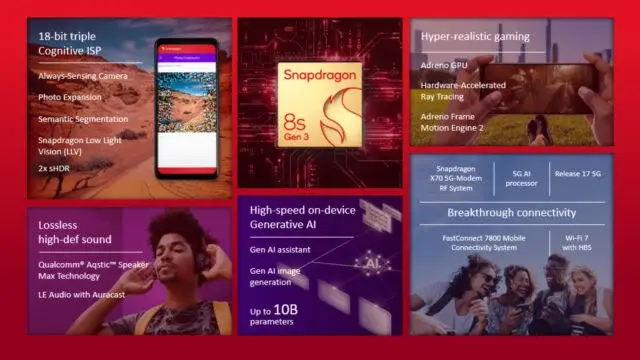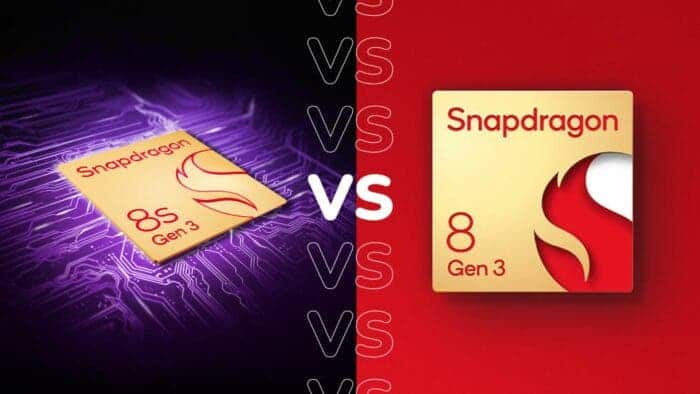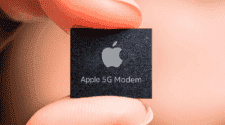Qualcomm, a leading chipset manufacturer, has recently introduced the Snapdragon 8s Gen 3 to provide more choices in the high-end processor market. This chip focuses on strong performance while taking affordability into account. Compared with the flagship Snapdragon 8 Gen 3, it is more cost-effective. However, many consumers are confused about the differences between the two processors due to their similar names. While these two chipsets share similarities in their names and underlying technologies, they exhibit key differences that cater to distinct market segments.

At first glance, the Snapdragon 8s Gen 3 seems to be similar to the Snapdragon 8 Gen 3. However, there are some differences between the two. Simply put, Snapdragon 8s Gen 3 can be seen as a streamlined version of Snapdragon 8 Gen 3. Qualcomm claims that it is designed specifically for mid-range flagship smartphones and can bring flagship-level performance experience at a more affordable price.
Snapdragon 8s Gen 3 vs Snapdragon 8 Gen 3: Full Specs Table
| Snapdragon 8s Gen 3 | Snapdragon 8 Gen 3 | |
|---|---|---|
| Process Node | TSMC 4nm | TSMC 4nm |
| CPU | Octa-core Kryo CPU 1x 3.0GHz (Cortex-X4) 4x 2.8GHz (Cortex-A720) 3x 2.0GHz (Cortex-A520) |
Octa-core Kryo CPU 1x 3.3GHz (Cortex-X4) 3x 3.2GHz (Cortex-A720) 2x 3.0GHz (Cortex-A720) 2x 2.3GHz (Cortex-A520) |
| GPU | Adreno 735 GPU (likely) HW Ray Tracing AFME 2.0 |
Adreno 750 HW Ray Tracing with Global Illumination AFME 2.0 Unreal Engine 5 Lumen |
| NPU | Hexagon NPU Run AI models up to 10B parameters |
Hexagon NPU Run AI models up to 10B parameters |
| Camera Support | Cognitive ISP, Triple 18-bit ISPs Up to 200MP photo capture 108MP ZSL, 64+36 ZSL, 36+36+36 ZSL 4K HDR video capture at 60 FPS |
Cognitive ISP, Triple 18-bit ISPs Up to 200MP photo capture 108MP ZSL, 64+36 ZSL, 36+36+36 ZSL 8K HDR video capture at 30FPS Night Vision Video Capture with AI Noise Reduction |
| Connectivity | Wi-Fi 7, Bluetooth 5.4, LE | Wi-Fi 7, Bluetooth 5.4, LE |
| Modem | Snapdragon X70 5G Modem Peak Download Speed 5 Gbps Peak Upload Speed 3.5 Gbps |
Snapdragon X75 5G modem Up to 10 Gbps Peak Download Up to 3.5 Gbps Peak Upload |
| Storage / RAM Support | UFS 4.0 LPDDR5X memory up to 4200MHz |
UFS 4.0 LPDDR5X memory up to 4800MHz |
| AV1 Codec Support | HW-accelerated AV1 Decode only | HW-accelerated AV1 Decode only |
| NavIC Support | Yes | Yes |
Fabrication Technology and CPU Configuration
Both the Snapdragon 8 Gen 3 and the Snapdragon 8s Gen 3 are built on the same TSMC 4nm process node, ensuring efficiency and performance. However, when it comes to CPU configuration, notable distinctions emerge. The Snapdragon 8 Gen 3 boasts a more robust CPU setup with six high-performance cores and two power-efficient cores. In contrast, the Snapdragon 8s Gen 3 features five high-performance cores and three power-efficient cores.
Gizchina News of the week

One major difference between the Snapdragon 8s Gen 3 and Snapdragon 8 Gen 3 is that the former lacks a large core. However, it still uses the same 4nm process technology. Snapdragon 8s Gen 3 is equipped with a 3GHz Cortex-X4 prime core, four 2.8GHz Cortex-A720 performance cores, and three 2GHz Cortex-A520 energy-efficiency cores.
GPU Capabilities and AI Performance
In terms of GPU capabilities, the Snapdragon 8 Gen 3 is equipped with an Adreno 750 GPU that supports advanced features like Hardware-Accelerated Ray Tracing with Global Illumination and Unreal Engine 5 Lumen. On the other hand, the Snapdragon 8s Gen 3 comes with an Adreno 735 GPU that lacks some of these cutting-edge gaming features. Despite this discrepancy, both chipsets offer robust AI capabilities, enabling on-device AI with up to 10 billion parameters and compatibility with various AI models.
Modem Performance and Connectivity
The modem performance is another area where these chipsets differ significantly. The Snapdragon 8 Gen 3 integrates the latest Snapdragon X75 5G modem, capable of achieving peak download speeds of up to 10 Gbps. In contrast, the Snapdragon 8s Gen 3 utilizes the older Snapdragon X70 5G modem, offering lower peak speeds of up to 5 Gbps. Moreover, while both chipsets support Bluetooth technologies like Bluetooth 5.4 and Bluetooth LE Audio, the connectivity options vary in terms of cellular modems.
Camera Capabilities and Video Recording
When it comes to camera capabilities, the Snapdragon 8 Gen 3 outshines its counterpart by supporting advanced AI-powered camera features like Night Vision video capture, Video Object Eraser, and Vlogger’s View. These exclusive features enhance the imaging experience on devices powered by the Snapdragon 8 Gen 3. On the other hand, the Snapdragon 8s Gen 3 is limited in its camera capabilities compared to the flagship variant. The Snapdragon 8s Gen 3 only supports video recording up to 4K HDR 60fps. However, the Snapdragon 8 Gen 3 supports 8K 30fps or 4K 120fps video recording capabilities.
Memory Support, Storage & Baseband
Both chipsets support LPDDR5X memory and UFS 4.0 storage technology. However, there are slight differences in memory performance between the two. The LPDDR5X memory on the Snapdragon 8s Gen 3 operates at speeds up to 4200MHz, while the Snapdragon 8 Gen 3 offers slightly faster performance with memory channels capable of reaching up to. The memory specifications of Snapdragon 8s Gen 3 have also been slightly reduced, supporting up to 24GB LPDDR5X memory. The frequency is only 4200MHz. This is not as good as the 4800MHz of Snapdragon 8 Gen 3.

In terms of baseband, Snapdragon 8s Gen 3 uses the Snapdragon X70 baseband instead of the X75 baseband. This means that the maximum download rate of the cellular network of Snapdragon 8s Gen 3 is 5Gbps. It is less than the 10Gbps of Snapdragon 8 Gen 3.
Conclusion
In conclusion, the Snapdragon 8s Gen 3 and Snapdragon 8 Gen 3 represent Qualcomm’s strategic approach to offering diverse choices in the high-end processor market. While both chips share similarities in their underlying technologies and process node, they are tailored to address distinct market segments. The Snapdragon 8s Gen 3 stands out as a cost-effective option designed for mid-range flagship smartphones, delivering impressive performance at a more affordable price point compared to the flagship Snapdragon 8 Gen 3. This differentiation allows consumers to choose a chipset that aligns with their specific needs and budget constraints.
The notable differences between the two chipsets, such as CPU configuration, GPU capabilities, modem performance, camera features, and memory support, showcase Qualcomm’s commitment to providing versatile solutions that cater to varying user requirements. By offering a streamlined version of the Snapdragon 8s Gen 3 alongside the flagship Snapdragon 8 Gen 3, Qualcomm ensures that consumers have access to a range of high-quality processors that balance performance, affordability, and feature sets. This strategic product differentiation enhances competition in the market and empowers users to make informed decisions based on their preferences and priorities.





